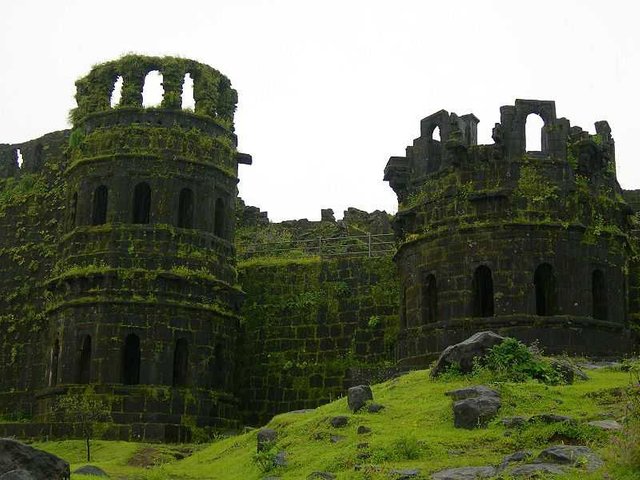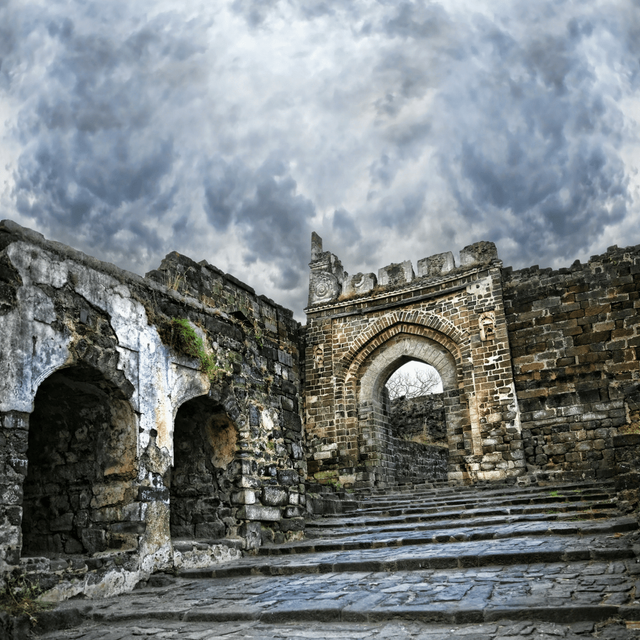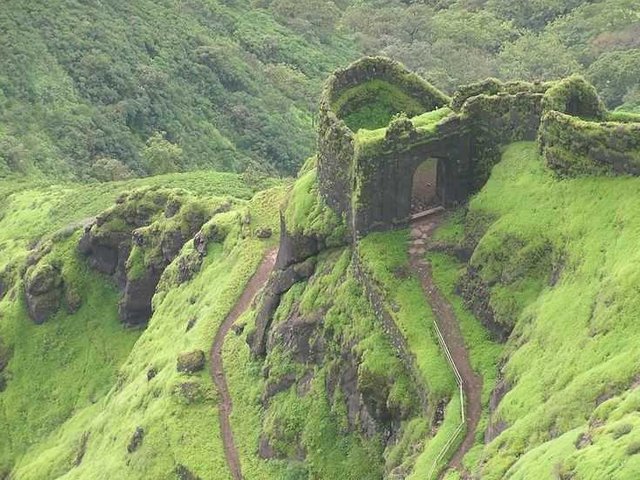The Great Fort - Raigad

The Great Maratha King, Shivaji built his capital city in the Raigad Fort in 1656. Two very important villages, Pachad and Raigadwadi, were located in the base of this fort, and ten thousand cavalry were always kept standby in the Pachad village during the Maratha rule. In 1689, the Mughals captured this fort and Aurangzeb renamed it “Islamgad”. In 1765, the Raigad Fort was the target of an armed expedition by the British East India Company who saw it as a piratical stronghold and thereby bombarded and destroyed in 1818, and it was handed over to the same.

In the present day, Fort is in ruins, it still entails the aura of grandness and splendor. Built in as early as 1030 AD, the ruins of Raigad Fort consist of the queen’s quarters or the ‘Rani Vasa’ with six chambers with attached private restrooms which could be entered from the Mena Darwaja. The main palace, the Raj Bhavan, which was Shivaji’s Palace, was made of wood of which only the bases of the pillars remain and in the palace grounds overlooking the Ganga Sagar Lake, there are the fragmented ruins of three watchtowers. The Royal Bath projects an impressive drainage system along with an underground cellar which was used for secretive and highly confidential activities! The Takmak Tok or the execution point is a cliff in the periphery were sentenced prisoners were pushed to death. There are also the ruins of the old marketplace and right in front is the statue of Shivaji himself that leads to the Jadgishwar mandir and his own tomb along with that of his dog, Waghya. The king’s public court or the Raj Sabha has the replica of the original throne that faces the Nagarkhana darwaja, whilst the enclosure was acoustically designed to aid hearing from even the entrance. Again, in the right side of the Palkhi darwaja is a row of three deep, dark chambers which were believed to be granaries of the fort. The Hirakani Buruj, the famous wall constructed over a huge cliff still stands strong even today. Holi Cha Mal situated outside the Nagarkhana is a wide open ground which was used for holi celebrations. Bara Tanki consisted of more than a dozen water reservoirs, along with Ammunition depot, Rameshwar Mandir, Wagh Darwaja, the Chit darwaja located in Pachad, are among other attractions of the fort.
Owing to the location and structure of the Raigad Fort, it has the best means for trekking, with varying interesting routes right from easy to challenging! The general trek starts at Pachad, 24 kilometers from Mahad, which is a shallow sea port on the banks of the Savitri River. Also, Fort Torana, Fort Lingana, Fort Mangad, and Birwadi, located in and around the Raigad Fort, provides some beautiful trek routes.

Presently, there is the Raigad Ropeway which helps visitors to reach the Raigad Fort, avoiding the arduous climb. It is a rather picturesque climb through the mist-laden clouds, touched upon by the wind. The Ropeway, built in 1996 which an interesting element of the fort, lands at the Mena Darwaja.
The Raigad Fort is located at a favourable distance from both Mumbai and Pune. It is a two hour drive from Pune to the fort. One can reach the Raigad Fort from Mumbai in less than two hours by road, located 140 kilometers from the metropolis.
Along with it being a place of immense historical relevance, the Raigad Fort is also considered to be a sacred pilgrimage destination. The Raigad Fort is well-maintained, nurturing the nourishing green across the hilly terrain, thereby preserving its authenticity. No doubt, the best time to visit the Raigad Fort is in the Monsoons!
Hi! I am a robot. I just upvoted you! I found similar content that readers might be interested in:
https://www.tripoto.com/trip/raigad-fort-killa-information
Nice job keeep it up ... upvoted.
upvote me back thanks!
I have followed and upvoted approx 10 posts, Please give your support Thanks
thanks bro
great post